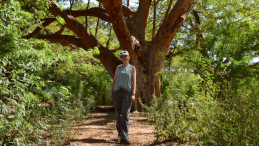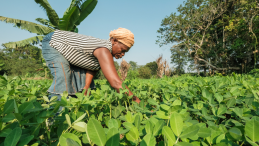The Nexus Approach to the sustainable management of water, soil, waste, and other geo-resources identifies three main aspects of global change, namely: climate change, urbanisation, and population growth. As the most carbon-intensive sector globally, the building & construction sector must deliver low-emissions solutions enabling urbanisation and sustaining population growth, tackling all three aspects. To examine the sustainability of these solutions in a holistic way, their assessment must consider the ecological, economical, and social dimensions as well as their interdependencies.
While it has impacts on water, soil, and waste, the construction sector relies heavily on the availability of sand and gravel to make concrete. Sand and gravel are the most sought-after raw materials on Earth after water – they are becoming increasingly scarce, and their extraction is having a major impact on ecosystems. Hence, there is a need for disruptive innovation in the largely inefficient global construction market that would increase resource efficiency, decrease greenhouse gas (GHG) emissions, and pave the way to a circular economy.
The objective of this project is to provide Sustainability Assessment concepts that manage tradeoffs and synergies of resources for disruptive innovation in the construction sector, considering the case of material-minimized Carbon Reinforced Concrete (CRC) structures. It is one of 21 sub-projects of the Collaborative Research Centre/Transregio 280 (SFB/TRR 280), which examines design strategies for material-minimised CRC structures, generating principles of a new approach to construction.
The project analyses barriers and uncertainties in the built environment that determine the market dynamics of disruptive innovation. This supports the ex-ante modelling of the life cycle sustainability of new material-minimised CRC structures, integrating the methods Life Cycle Assessment (LCA), Life Cycle Costing (LCC) and Social Life Cycle Assessment (S-LCA). The research pays special attention to methodological requirements for integrating the circular economy approach into sustainability assessment.
This project is funded by the German Research Foundation (DFG).





